Elephants are among the most magnificent creatures on Earth—intelligent, emotional, and incredibly strong. With their long trunks, gentle eyes, and deep family bonds, they’ve fascinated humans for centuries. But did you know there isn’t just one type of elephant? In fact, several distinct species and subspecies live across Africa and Asia, each with its own unique size, tusk shape, and habitat preferences.
This guide explores the 14 most remarkable types of elephants found around the world, from the mighty African Bush Elephant to the elusive Borneo Pygmy Elephant. Whether you’re a wildlife enthusiast, conservation supporter, or simply curious about nature’s giants, this article will help you identify each elephant species, understand its behavior, and appreciate the rich diversity of these gentle titans.
1. African Bush Elephant (Loxodonta africana)
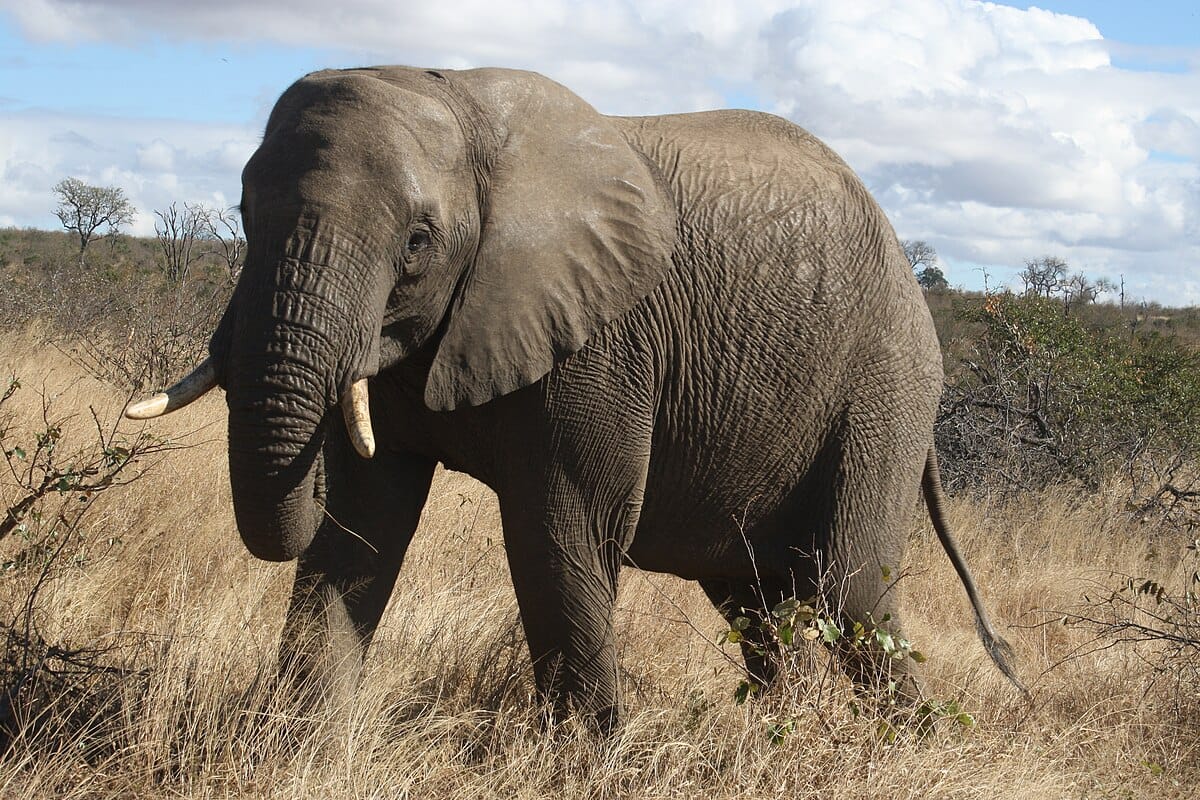
The African Bush Elephant, also known as the African Savanna Elephant, is the largest land animal on the planet. Adult males can weigh up to 12,000 pounds (5,400 kilograms) and stand about 10 to 13 feet tall at the shoulder. Their immense size and wide ears—shaped roughly like the African continent—are key identification features. These elephants roam across sub-Saharan Africa, particularly in countries like Kenya, Tanzania, Botswana, and South Africa.
One of the most remarkable traits of the African Bush Elephant is its intelligence and strong social bonds. Herds are usually led by a matriarch, often the oldest and wisest female. She guides the group to water and food sources and helps protect the calves. Males typically leave the herd once they mature and live solitary or loosely connected bachelor lives.
African Bush Elephants play a vital ecological role as “ecosystem engineers.” By knocking down trees and digging for water, they shape the savanna landscape and create water holes used by many other animals. Sadly, poaching for ivory and habitat loss have significantly reduced their population. Conservation efforts across Africa now focus on anti-poaching measures, habitat restoration, and wildlife corridors to allow herds to migrate safely.
To identify them in the wild, look for large fan-shaped ears, concave backs, and both male and female elephants with visible tusks. Their skin is rough and wrinkled—perfect for heat regulation—and they often cover themselves in dust or mud to protect against sunburn and insects.
2. African Forest Elephant (Loxodonta cyclotis)
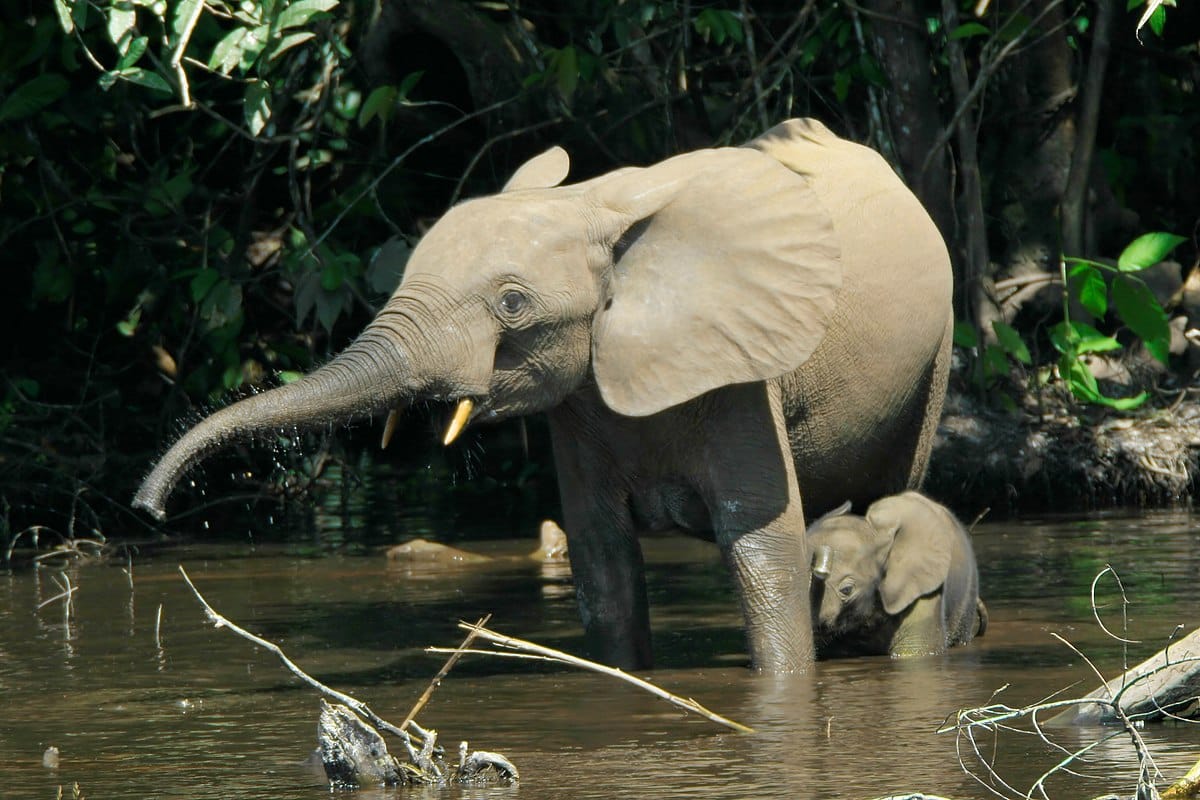
Smaller but no less impressive, the African Forest Elephant lives deep within the dense rainforests of Central and West Africa. Once thought to be the same species as their larger savanna relatives, genetic studies have confirmed they are distinct. Forest Elephants have straighter tusks, more rounded ears, and smoother skin compared to the Bush Elephant.
These elephants are elusive by nature, often hidden within thick vegetation. Their tusks are straighter and point downward—an adaptation that helps them maneuver through forest paths and dig for minerals in the soil. Despite their smaller size (adults stand around 8–10 feet tall and weigh about 6,000 pounds), Forest Elephants are powerful diggers and play a crucial role in dispersing seeds and maintaining rainforest biodiversity.
They prefer fruit-heavy diets and are known as “gardeners of the forest.” Their droppings often contain seeds from dozens of plant species, which helps regenerate the forest ecosystem. Unfortunately, Forest Elephants are critically endangered due to illegal ivory trade and habitat fragmentation. In some regions, their populations have dropped by over 80% in just a few decades.
If you’re trying to tell them apart in photos or the wild, note their rounded forehead, oval ears, and darker skin tone. They also have a quieter temperament than Bush Elephants, though they can be fiercely protective of their young. Observing a Forest Elephant in its natural environment is rare—and deeply moving.
3. Asian Elephant (Elephas maximus)
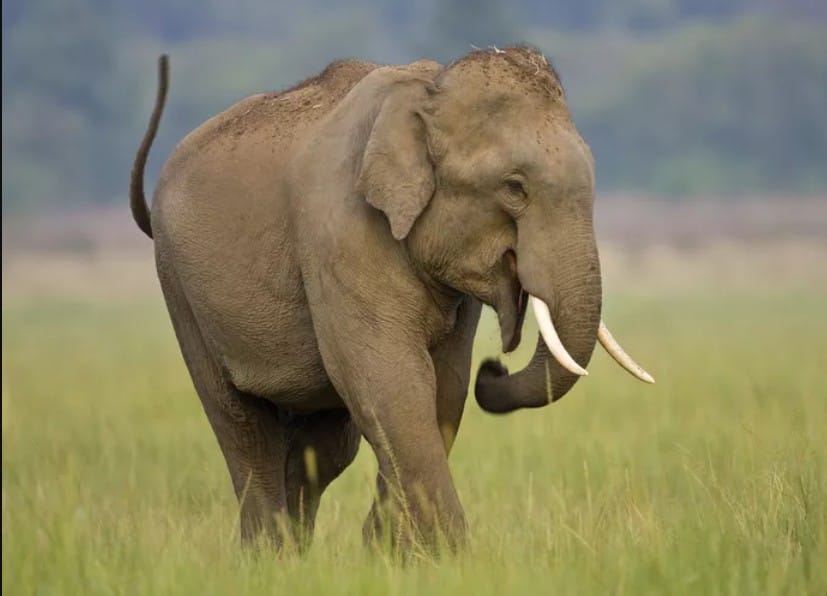
The Asian Elephant, native to the forests of South and Southeast Asia, is slightly smaller than its African relatives but equally iconic. These elephants have smaller, rounded ears and smoother skin. Unlike African species, only male Asian Elephants typically grow tusks, while females may have tiny “tushes” or none at all.
Asian Elephants inhabit countries such as India, Thailand, Sri Lanka, Myanmar, and Indonesia. They prefer tropical forests and grasslands and are highly adaptable to varying environments, from humid jungles to dry plains. Their populations are divided into several subspecies, each adapted to local conditions—such as the Indian, Sumatran, and Sri Lankan elephants.
Culturally, the Asian Elephant holds immense significance. In Hinduism and Buddhism, elephants symbolize wisdom, strength, and prosperity. They’ve been used for centuries in ceremonies, forestry work, and traditional practices—though today, conservationists encourage keeping elephants in the wild rather than captivity.
Asian Elephants are herbivores that consume around 150 kilograms (330 pounds) of vegetation daily, including grasses, fruits, and bark. They’re highly social animals, often forming female-led herds similar to those of African elephants. However, habitat loss and human–elephant conflicts have become major threats, especially in India and Sri Lanka.
When identifying Asian Elephants, note their domed head with a twin-humped appearance, small ears, and smoother skin. Their trunk tip has one “finger” instead of two (as seen in African species), which they use skillfully to pick up small objects or food.
4. Indian Elephant (Elephas maximus indicus)
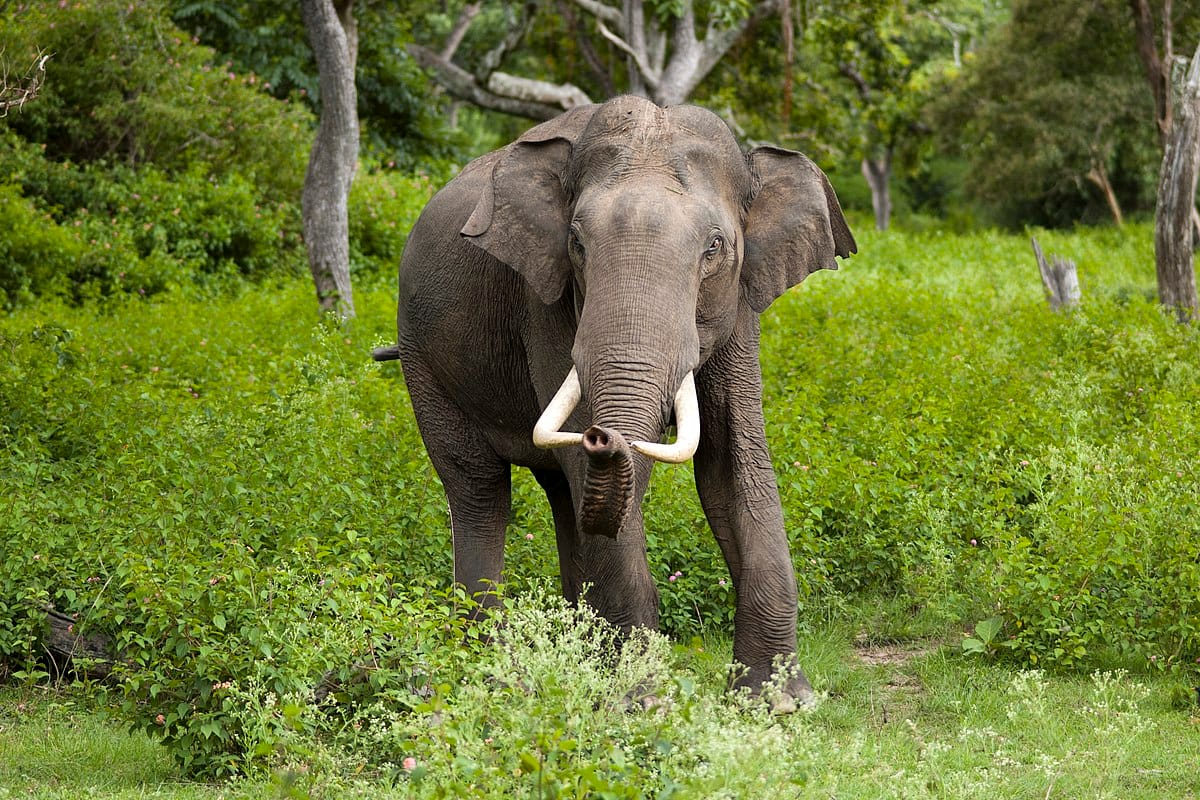
The Indian Elephant is the most widespread subspecies of the Asian Elephant and the one most people picture when thinking of elephants in India. Found across India, Nepal, Bhutan, Bangladesh, and parts of Southeast Asia, this subspecies thrives in a variety of landscapes—from grasslands and forests to agricultural regions.
Indian Elephants are smaller than African Elephants, standing around 8–10 feet tall. Their ears are relatively small and shaped like the Indian subcontinent, while their trunks are dexterous and expressive. Tusks are typically seen only in males, though even among them, tusk size varies greatly.
Socially, Indian Elephants are gentle and cooperative. Females live in matriarchal herds that communicate through low-frequency rumbles and touch. These elephants are also highly emotional and display behaviors such as mourning, play, and even empathy toward other animals.
Sadly, they are endangered due to habitat encroachment, railway accidents, and human–elephant conflict. Conservation efforts in India include protected corridors and community-based coexistence programs.
If you’re identifying an Indian Elephant, look for a broad back, single-domed head, and smoother, lighter gray skin. They’re often seen bathing in rivers or playfully dusting themselves with soil to stay cool.
5. Sri Lankan Elephant (Elephas maximus maximus)
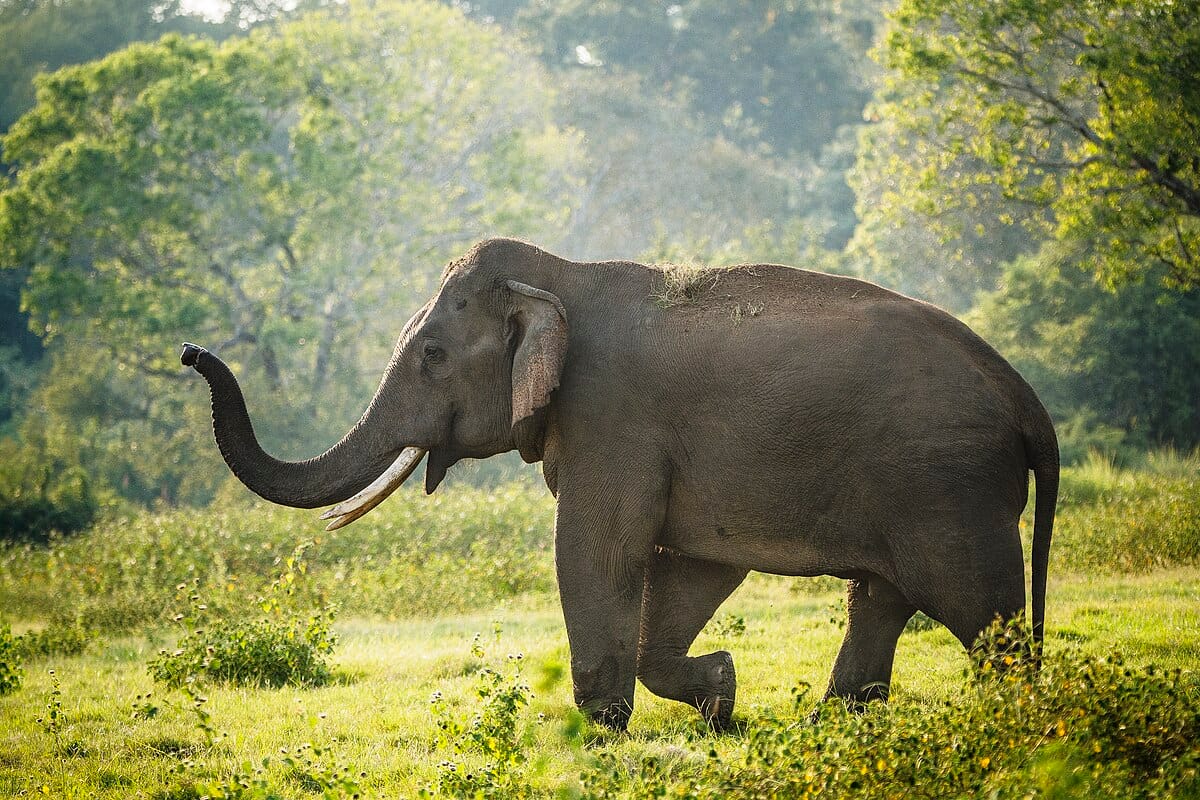
The Sri Lankan Elephant is the largest and darkest subspecies of the Asian Elephant, found exclusively on the island of Sri Lanka. It’s also the most endangered, with only about 2,000–3,000 individuals remaining in the wild. Compared to other Asian elephants, Sri Lankan Elephants have larger bodies, thicker skin, and often lack tusks—even among males.
These elephants live primarily in the dry zones of the island, particularly in protected areas such as Minneriya and Udawalawe National Parks. They’re highly adapted to the region’s seasonal rainfall patterns and migrate to find water during the dry months. One of the most spectacular wildlife events in Sri Lanka is “The Gathering,” when hundreds of elephants congregate around the Minneriya reservoir—a breathtaking display of social behavior.
Sri Lankan Elephants play an essential role in maintaining the island’s ecosystems. They open up forest canopies, disperse seeds, and help sustain grasslands that benefit other wildlife. However, conflicts with farmers remain a serious problem as elephants often raid crops when natural food becomes scarce.
These elephants can be identified by their dark gray skin with distinct pinkish patches on the face, ears, and trunk. Their large, muscular frames and calm but cautious demeanor make them one of the most majestic elephants to observe in the wild.
6. Sumatran Elephant (Elephas maximus sumatranus)
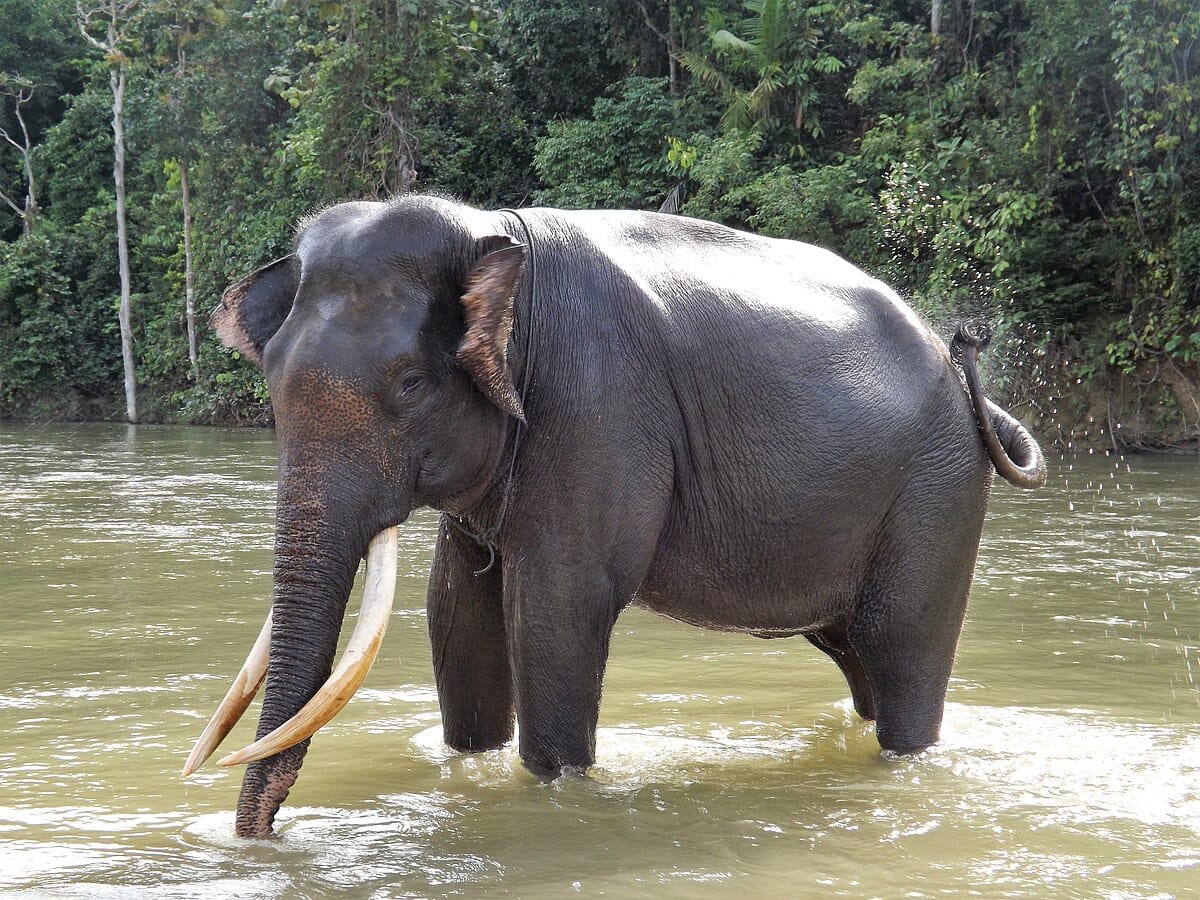
Among all the Asian elephant subspecies, the Sumatran Elephant is perhaps the most critically endangered. Native to the Indonesian island of Sumatra, these gentle giants inhabit tropical rainforests, lowland plains, and river valleys. Sadly, due to massive deforestation and human settlement, more than 70% of their natural habitat has vanished over the past few decades. Today, fewer than 2,000 individuals remain, mostly scattered in small, fragmented populations.
Sumatran Elephants are smaller than their Indian and Sri Lankan relatives, typically standing about 7 to 9 feet tall and weighing up to 5 tons. Their ears are relatively large for their body size—an adaptation that helps them cool off in the humid climate. The skin of Sumatran Elephants tends to be lighter gray and smoother than that of other Asian elephants, often with pinkish or pale freckles around the trunk and ears.
These elephants are highly intelligent and social. They live in herds led by a matriarch and communicate through deep rumbles that can travel for miles. In the wild, Sumatran Elephants play a vital ecological role as “seed dispersers.” By eating fruits and excreting seeds across large distances, they help maintain forest diversity. Their diet includes grasses, fruits, roots, bark, and occasionally cultivated crops, which sometimes brings them into conflict with local farmers.
Conservationists in Indonesia are working tirelessly to protect these elephants through habitat restoration and community education. Organizations like WWF and Elephant Conservation Centers focus on mitigating human-elephant conflict and preserving migration corridors.
You can identify a Sumatran Elephant by its small size, large ears, and rounded back. Males may or may not have tusks, and when present, they are generally shorter and straighter than those of other subspecies. Seeing one in the wild is a rare privilege and a reminder of how fragile yet resilient nature can be.
7. Bornean Elephant (Elephas maximus borneensis)
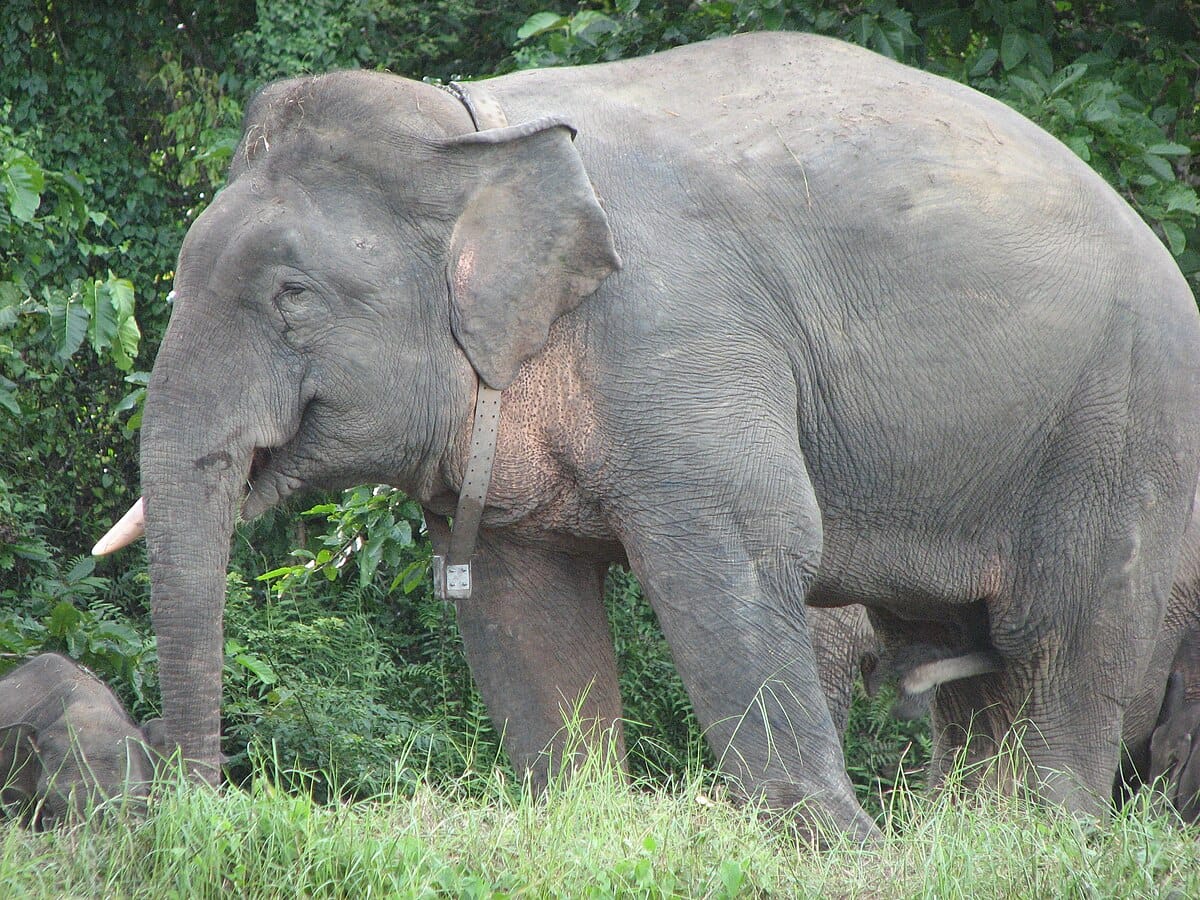
The Bornean Elephant, also known as the Borneo Pygmy Elephant, is one of the most distinct and mysterious elephant subspecies in Asia. Found primarily in northeastern Borneo, particularly in the Malaysian state of Sabah, these elephants are the smallest living elephants in the world. Adult males stand about 8 feet tall, and females are even smaller. Their compact size, long tails, and large rounded bellies give them an almost “baby-faced” look, which makes them appear incredibly gentle and endearing.
For years, scientists debated whether Bornean Elephants were truly native to the island or descendants of domesticated elephants introduced centuries ago. Genetic research has now confirmed they’ve been isolated on Borneo for thousands of years, evolving unique traits in the process.
Bornean Elephants are forest dwellers that prefer lowland rainforests, riverbanks, and swampy areas. They feed on grasses, bamboo, and various fruits, especially wild bananas. Due to the expansion of palm oil plantations, much of their natural habitat has been destroyed, forcing them into smaller areas and increasing conflict with humans.
Their social structure is matriarchal, with female-led herds of up to 20 individuals. They are known for being remarkably calm compared to other elephants, often described by researchers as “the most peaceful” among their species. However, they are still powerful and can be dangerous when threatened.
Identifying a Bornean Elephant is relatively easy: they have smaller, rounder bodies, oversized ears, and noticeably long tails that sometimes reach the ground. Their tusks are thin and slightly curved upward, giving them a distinct appearance. Conservation programs in Sabah, such as those run by the Borneo Conservation Trust, focus on protecting their forest corridors and reducing habitat fragmentation.
8. North African Elephant (Loxodonta africana pharaohensis)
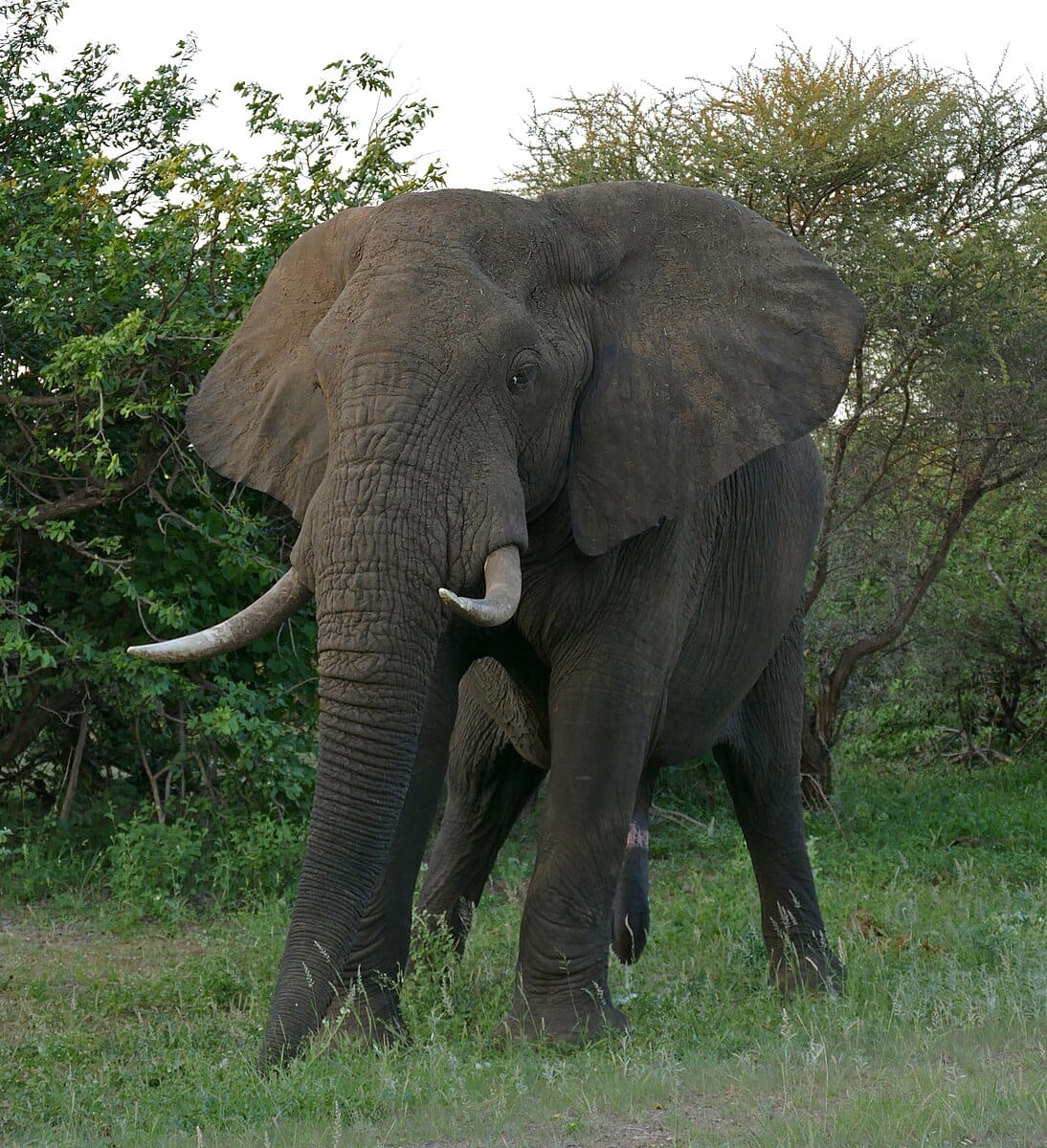
The North African Elephant, also called the Carthaginian Elephant, holds a special place in history. This now-extinct subspecies once roamed across North Africa, from modern-day Morocco to Sudan. It’s most famous for being used by ancient Carthaginians and Numidians in warfare—most notably by the legendary general Hannibal, who crossed the Alps with elephants to fight the Romans.
Unlike the massive African Bush Elephant, the North African Elephant was smaller and more easily trained. Adults stood around 8 to 9 feet tall, with smaller ears and tusks. Ancient accounts describe them as more docile, possibly due to centuries of selective breeding for tameness. Artistic depictions and archaeological evidence show they had relatively straight tusks and smoother skin than modern African elephants.
These elephants lived in semi-arid environments, feeding on grasses, shrubs, and acacia trees. Overhunting, habitat changes, and the rise of human civilization gradually led to their extinction around the second century CE. The loss of the North African Elephant marked the disappearance of elephants from the Mediterranean basin—a region that once supported thriving populations.
Though extinct, the North African Elephant continues to captivate historians and biologists alike. Their unique adaptation to desert-like conditions and their role in human warfare highlight how closely intertwined elephants and humans have been throughout history. Today, they serve as a reminder of how quickly human activity can drive even powerful species to extinction.
9. Straight-Tusked Elephant (Palaeoloxodon antiquus)
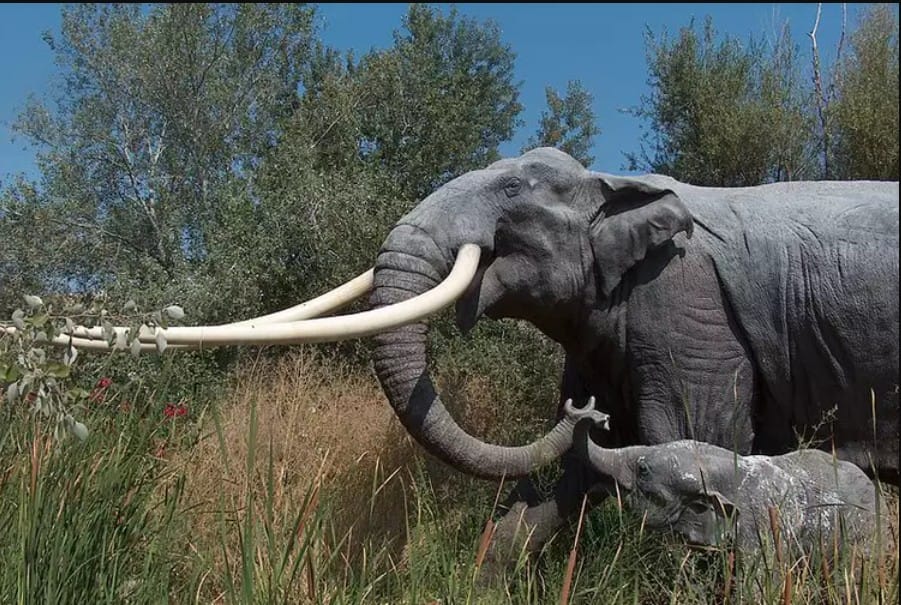
The Straight-Tusked Elephant is an extinct giant that once roamed Europe and parts of Asia during the Pleistocene epoch. These majestic animals were enormous—some reaching heights of over 14 feet and weighing up to 15 tons, rivaling even the largest modern elephants. As their name suggests, they were characterized by incredibly long, straight tusks that could grow up to 13 feet in length.
Fossils of Straight-Tusked Elephants have been found across Europe, from Spain to Germany and as far east as Japan. They lived during a time when Europe’s climate fluctuated between ice ages and warmer periods, and they adapted to both forested and open landscapes. Scientists believe they were primarily browsers, feeding on leaves, bark, and shrubs rather than grasses.
These elephants coexisted with early humans, including Neanderthals, who hunted them for food and used their bones and tusks for tools. Cave paintings and archaeological remains suggest humans had a profound relationship with these prehistoric giants.
Physically, Straight-Tusked Elephants had a more domed head than modern elephants and proportionally longer legs. Despite their size, they were likely social animals, living in herds similar to today’s elephants. Genetic studies have revealed that the Straight-Tusked Elephant was closely related to the modern Asian Elephant and the extinct Woolly Mammoth.
Their extinction around 30,000 years ago was likely due to climate change and human hunting pressure. Today, fossils of Straight-Tusked Elephants remain an important part of understanding elephant evolution and adaptation. They remind us that the diversity of elephants once spanned continents—and that even the mightiest can disappear when the balance between nature and humanity is lost.
10. Dwarf Elephant (Palaeoloxodon falconeri)
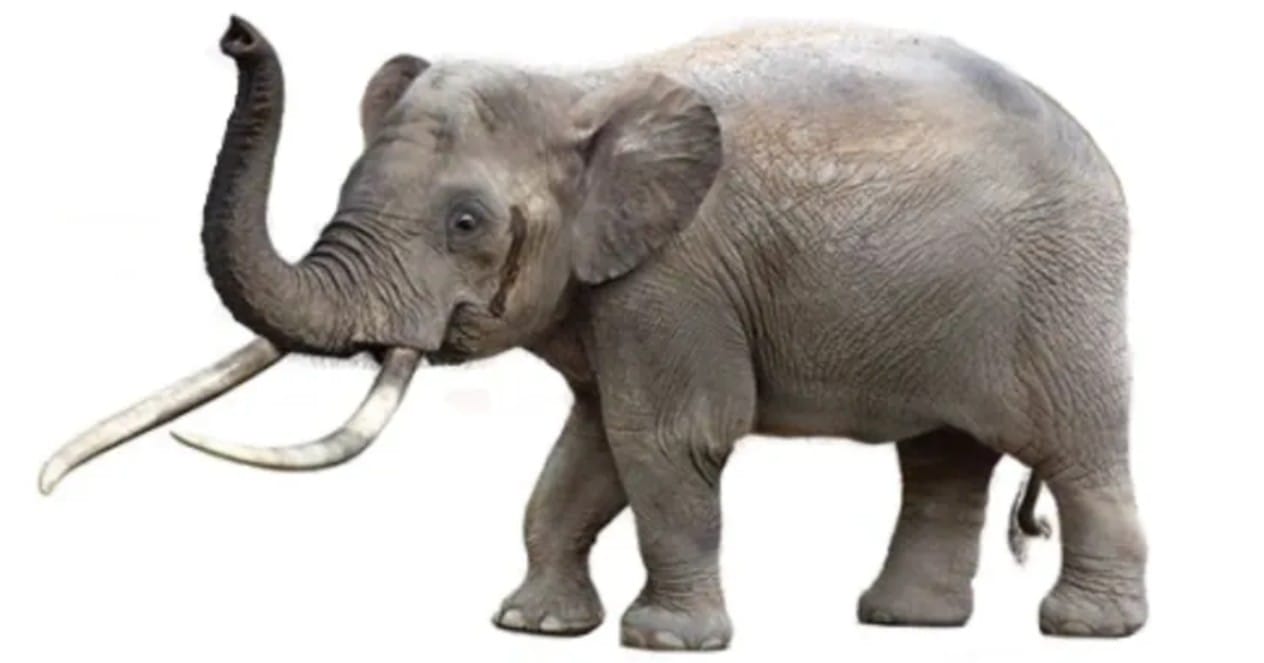
The Dwarf Elephant, sometimes known as the Sicilian or Maltese Dwarf Elephant, is one of nature’s most fascinating examples of evolution through isolation. These tiny elephants once lived on Mediterranean islands such as Sicily, Malta, and Crete. Unlike their massive mainland relatives, they stood barely 3 feet (1 meter) tall—about the size of a large dog. Despite their small stature, they retained all the characteristic elephant features: tusks, trunks, and gentle personalities.
The Dwarf Elephant evolved from larger mainland species, likely the Straight-Tusked Elephant, which reached these islands during periods of low sea levels. Once isolated, food resources were limited and predators were few, so over thousands of years, these elephants underwent “insular dwarfism,” a process where species shrink in size to adapt to smaller, resource-scarce environments.
Fossil discoveries in caves across the Mediterranean reveal that these elephants were not merely juveniles but fully mature adults. Their bones show adaptations for a slower metabolism and reduced body size. Their tusks were proportionally shorter and more curved, while their skulls were slightly rounder than those of their ancestors.
Although they vanished thousands of years ago, possibly due to climate change and human arrival on the islands, Dwarf Elephants provide crucial insight into evolution’s flexibility. They demonstrate how the same species can adapt dramatically to new conditions, reshaping itself over time to survive.
In appearance, imagine a miniature elephant with a short trunk, thick legs, and a gentle, rounded back—adorable yet still unmistakably an elephant. Today, scientists continue to study these fossils to better understand how climate and geography influence size and adaptation across species.
11. Elephas planifrons (The Early Asian Elephant)
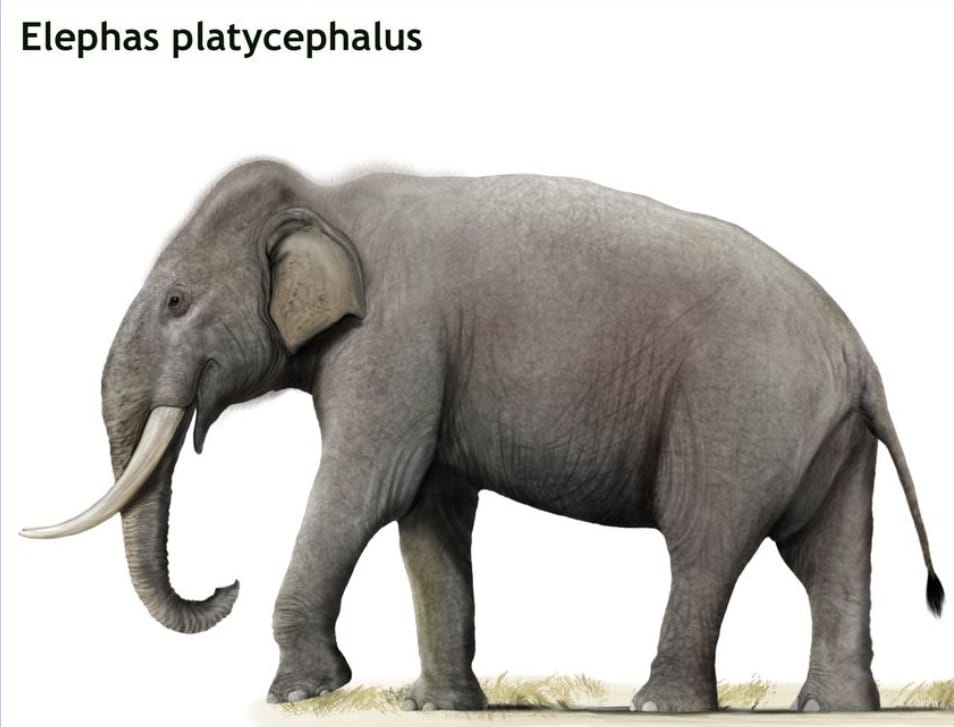
Elephas planifrons is one of the earliest known members of the Asian elephant lineage. This ancient species lived around 2 to 3 million years ago, during the late Pliocene and early Pleistocene epochs, across regions of the Indian subcontinent. Its fossils have been discovered in the Siwalik Hills of India and Pakistan, helping paleontologists trace the evolutionary path that led to modern Asian elephants.
Compared to today’s elephants, Elephas planifrons had a flatter forehead (hence its name, meaning “flat-fronted elephant”) and smaller tusks. Its molars were adapted for browsing rather than grazing, suggesting a diet composed mainly of leaves and soft vegetation. These adaptations indicate that it likely lived in woodland or forested environments.
As climates shifted and grasslands expanded across Asia, Elephas planifrons gradually gave rise to more advanced species like Elephas hysudricus and eventually Elephas maximus—the modern Asian Elephant. Each evolutionary stage brought changes to body size, tooth structure, and skull shape, allowing elephants to thrive in different habitats.
Although extinct for millions of years, Elephas planifrons plays a critical role in understanding how environmental pressures drive adaptation and diversification within the elephant family tree. Fossils of this species also serve as key evidence linking prehistoric elephants to their living descendants.
In appearance, it likely resembled a smaller, less muscular version of the modern Asian Elephant, with a straighter back and shorter tusks. Studying its remains reminds us that today’s elephants carry within them a deep evolutionary legacy spanning millions of years.
12. Woolly Mammoth (Mammuthus primigenius)
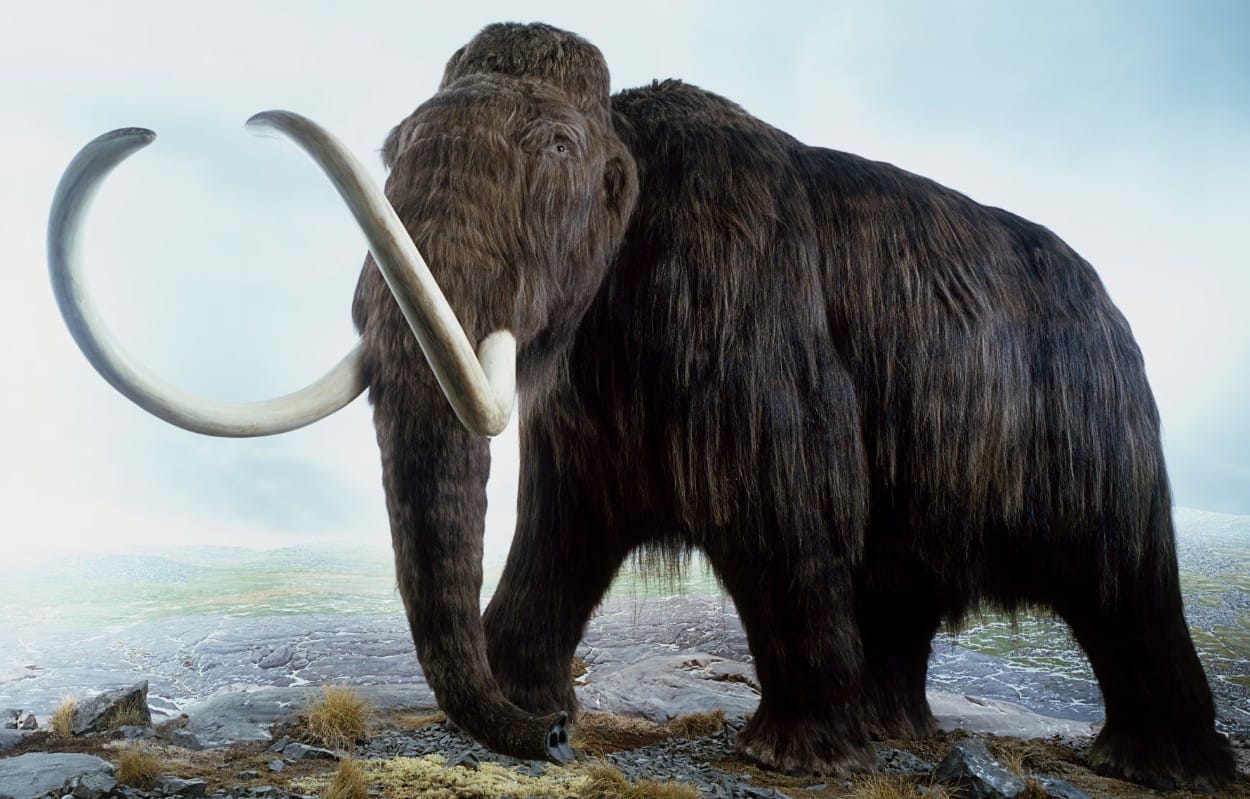
Few extinct animals capture the human imagination like the Woolly Mammoth. This Ice Age giant once roamed the frozen steppes of Europe, Asia, and North America, thriving in the harsh conditions of the Pleistocene. Covered in thick, shaggy hair with an insulating layer of fat beneath its skin, the Woolly Mammoth was perfectly adapted to survive freezing temperatures and snow-covered landscapes.
Adults stood up to 11 feet tall and weighed around 6 tons, similar to modern elephants. Their iconic long, curved tusks—sometimes exceeding 15 feet in length—were used for digging through snow to reach vegetation and for fighting rivals. Unlike modern elephants, they had small ears and short tails to minimize heat loss.
Woolly Mammoths were herbivores, feeding on grasses, shrubs, and mosses. They lived in herds and had strong social structures, similar to today’s elephants. Fossilized carcasses found in Siberian permafrost have provided remarkable insights into their diet, genetics, and even behavior. Scientists have discovered intact mammoths with preserved hair, skin, and stomach contents—an incredible glimpse into Ice Age life.
Their extinction around 4,000 years ago was likely due to a combination of climate change and overhunting by humans. However, their story might not be entirely over. Recent advances in genetics and cloning technology have sparked debate about the possibility of de-extinction—bringing the Woolly Mammoth back using Asian Elephant DNA.
For now, the Woolly Mammoth remains a symbol of resilience and adaptation. Its memory continues to inspire scientific discovery and serves as a powerful reminder of the fragile balance between species and their environments.
13. Stegotetrabelodon (Stegotetrabelodon syrticus)
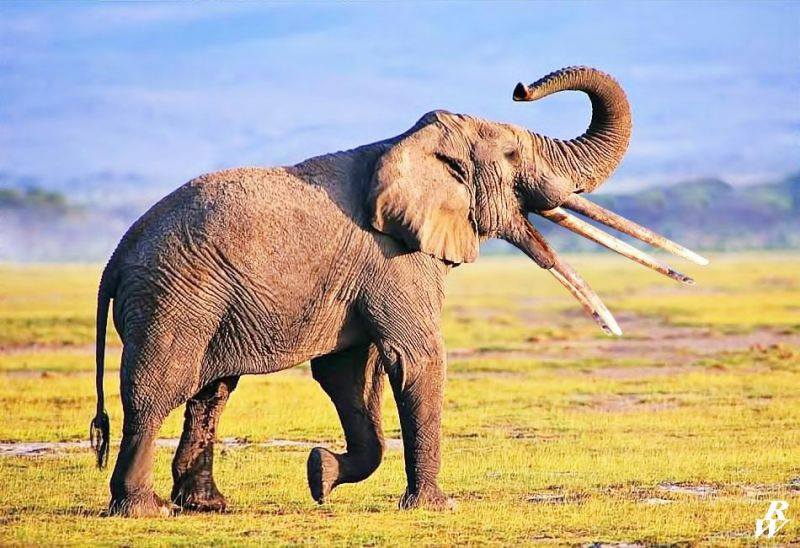
Long before modern elephants roamed Africa and Asia, there was Stegotetrabelodon—a prehistoric giant that lived between 6 and 5 million years ago. Often regarded as one of the earliest true elephants, this species bridges the gap between primitive proboscideans and the ancestors of modern elephants.
Fossils of Stegotetrabelodon syrticus have been found in Africa and parts of the Arabian Peninsula, suggesting it was one of the first elephants to migrate out of Africa. These animals stood about 10 feet tall and possessed four prominent tusks—two on the upper jaw and two on the lower—giving them a truly formidable appearance. The lower tusks were shorter and straighter, likely used to strip bark and dig for roots.
Stegotetrabelodon had a longer jaw than modern elephants and more primitive teeth, indicating a mixed diet of leaves and soft vegetation. Its body was bulky, but its legs were more slender than those of later species, suggesting it was adapted for a variety of terrains, from forest to savanna.
As one of the earliest members of the elephant family, Stegotetrabelodon represents a crucial evolutionary stage. Its existence marked the diversification of elephants into multiple lineages, eventually giving rise to both African and Asian species. Though extinct for millions of years, it remains an essential link in understanding how modern elephants evolved their characteristic trunks and tusks.
In scientific terms, Stegotetrabelodon is not just an ancestor—it’s a symbol of the origins of the elephant dynasty, a creature that laid the groundwork for the magnificent species that followed.
14. Columbian Mammoth (Mammuthus columbi)
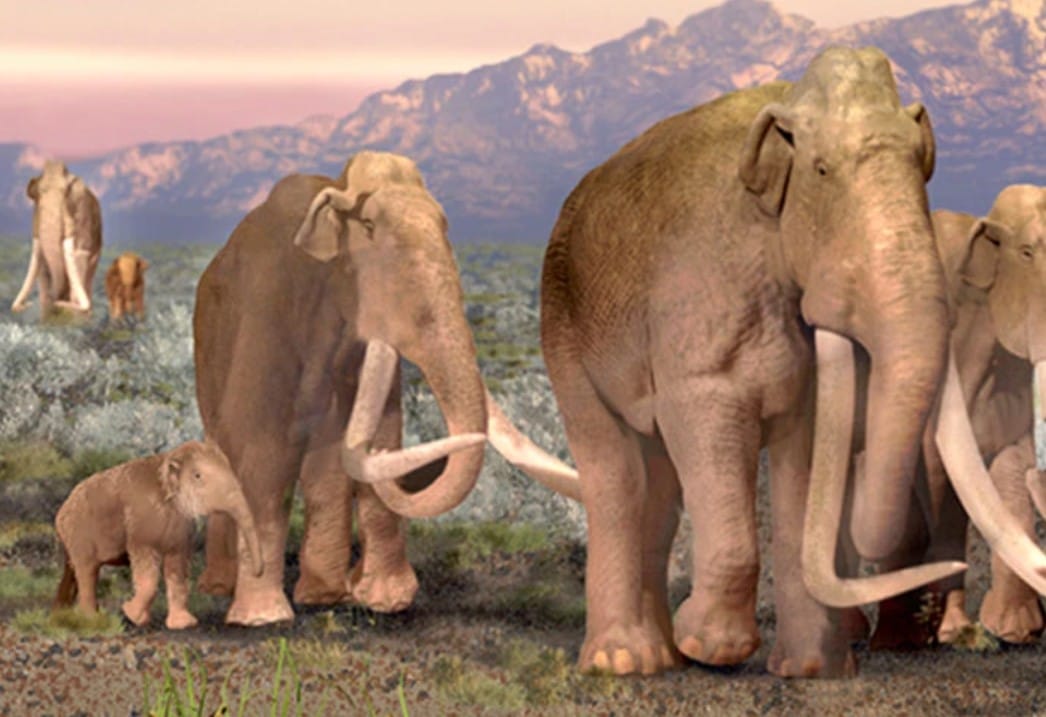
The Columbian Mammoth, a cousin of the Woolly Mammoth, roamed the warmer regions of North America during the last Ice Age. Standing up to 13 feet tall and weighing nearly 10 tons, it was one of the largest elephant species ever to exist. Unlike its woolly relative, the Columbian Mammoth had less body hair and adapted to open grasslands and savannas rather than icy tundras.
These mammoths were found across what is now the United States, Mexico, and Central America. Their enormous curved tusks could grow up to 14 feet long, used for defense, digging, and dominance displays during mating season. Columbian Mammoths fed mainly on grasses, herbs, and other low vegetation, making them true grazers of the prehistoric plains.
Interestingly, genetic studies show that Columbian and Woolly Mammoths interbred where their ranges overlapped, creating hybrid populations. This mixing of DNA is one reason scientists are so fascinated by the evolutionary flexibility of elephants.
Fossil evidence, including complete skeletons and footprints, shows that Columbian Mammoths lived in herds and shared strong social behaviors. They likely had long lifespans—up to 60 years—and cared deeply for their young, just like modern elephants.
Their extinction about 11,000 years ago coincided with the end of the Ice Age and the spread of early human hunters across the Americas. Today, their fossils are commonly found at sites such as the La Brea Tar Pits and Waco Mammoth National Monument, offering a window into a time when giants still walked the Earth.
The Columbian Mammoth’s legacy lives on in science, art, and imagination—a reminder of the awe-inspiring diversity and grandeur of the elephant family across time.
Frequently Asked Questions About Elephants
1. What are the three main types of elephants?
There are three main types of elephants living today: the African Savanna Elephant, the African Forest Elephant, and the Asian Elephant. The African species are larger and have big fan-shaped ears, while Asian elephants are smaller with rounded ears. Each type has its own unique traits, shaped by the environment it lives in.
2. What are the 7 classifications of elephants?
Elephants belong to a specific group in the animal kingdom. Their seven scientific classifications are: Kingdom Animalia, Phylum Chordata, Class Mammalia, Order Proboscidea, Family Elephantidae, Genus (Loxodonta or Elephas), and finally the Species level — such as Loxodonta africana for the African elephant or Elephas maximus for the Asian elephant.
3. What is the biggest type of elephant?
The African Savanna Elephant is the biggest type of elephant — and the largest land animal on Earth. Adult males can stand up to 13 feet (4 meters) tall and weigh around 6 to 7 tons. Their huge ears help them release heat, which is especially useful in Africa’s hot climate.
4. What are the two main elephants?
When people refer to two main elephants, they usually mean the African and Asian elephants. The African elephant lives mostly in the wild savannas and forests of Africa, while the Asian elephant roams parts of India and Southeast Asia. They share common ancestors but evolved separately over millions of years.
5. What elephant is more aggressive?
African elephants, especially the males during musth (a period of high testosterone), are generally more aggressive than Asian elephants. However, elephants usually become aggressive only when threatened or provoked. In their natural environment, they are calm and peaceful creatures.
6. How many breeds of elephants were there?
In the past, there were over 160 different species of elephants and their relatives, including mammoths and mastodons. Today, only three species remain: the African Savanna Elephant, the African Forest Elephant, and the Asian Elephant. The rest disappeared due to climate changes and human hunting over thousands of years.
7. Why are there two types of elephants?
Millions of years ago, elephant ancestors spread across Africa and Asia. As they adapted to different climates, two main lineages formed — African and Asian elephants. Each evolved special traits: African elephants developed larger ears and tusks to survive open, sunny savannas, while Asian elephants adapted to forests with smaller bodies and shorter ears.
8. What is a pachyderm?
“Pachyderm” is an old-fashioned term that means “thick-skinned animal.” It used to describe elephants, rhinos, and hippos. Although scientists no longer use it as a formal group name, the word is still sometimes used to describe large, thick-skinned mammals.
9. What does “Proboscidea” mean?
“Proboscidea” is the scientific order that includes elephants and their extinct relatives. The word comes from Latin and means “long nose” or “trunk.” It’s an appropriate name, since the elephant’s trunk is one of the most remarkable organs in the animal kingdom.
10. What is the strongest type of elephant?
The African Savanna Elephant holds the record as the strongest land mammal. It can lift and push trees, move logs, and carry several hundred kilograms using its trunk and tusks. Their incredible strength helps shape the ecosystem around them.
11. What kind of elephant is Dumbo?
Dumbo, the famous Disney character, is modeled after an Asian elephant. You can tell because of his smaller ears, rounded head, and expressive eyes. In the film, his oversized ears give him the magical ability to fly, but in real life, elephants use their ears to regulate body temperature and communicate.
12. Which two elephants were famous?
Two of the most famous elephants in history are Jumbo and Hanno. Jumbo was a massive African elephant who became a star of the 19th-century circus world, inspiring the word “jumbo” to mean “huge.” Hanno, on the other hand, was a white elephant gifted to Pope Leo X in the 1500s, symbolizing peace and prosperity.
13. Which elephant is easier to train?
Asian elephants are generally easier to train than African elephants. They have been domesticated for thousands of years and are often used in logging, ceremonies, and tourism in parts of Asia. Their calm temperament and intelligence make them more responsive to human guidance compared to their wild African cousins.
14. What type of elephant is the smartest?
All elephants are highly intelligent, but Asian elephants often show greater problem-solving and memory skills. Studies have found that they can use tools, recognize themselves in mirrors, and remember faces and places even after many years — abilities that rival those of dolphins and great apes.
15. What is a female elephant called?
A female elephant is called a cow. Elephant cows usually lead family herds made up of other females and their young. The oldest and most experienced female, called the matriarch, plays a vital role in guiding the herd to food, water, and safety.
16. What is a male elephant without tusks called?
A male elephant without tusks is sometimes referred to as a “makhna,” a term commonly used in India and Sri Lanka. Tusklessness in males is rare but can occur naturally, especially among Asian elephants. Interestingly, tuskless males often rely more on strength and experience than intimidation.
17. What is the bravest animal in the world?
While elephants are powerful, the title of “bravest animal” often goes to the honey badger. This small creature has been known to stand up to lions and snakes without hesitation. Elephants, however, display a different kind of bravery — protecting their herd and young from predators with courage and teamwork.
18. Are elephants friendly?
Yes, elephants are known for their gentle and social nature. They form deep bonds with family members and even show empathy toward other species. In the wild, they greet each other with trunk touches and low rumbles. However, like all wild animals, they must be treated with respect and caution.
19. Are elephants stronger than gorillas?
Absolutely. Elephants are far stronger than gorillas. A single elephant can lift over 600 pounds (270 kg) with its trunk alone and move trees effortlessly. Gorillas are powerful for their size but weigh only a few hundred pounds, making elephants the clear strength champions on land.
20. Do elephants mourn their dead?
Yes — elephants are one of the few animals that mourn their dead. They have been observed touching the bones of deceased elephants gently with their trunks and even standing silently by the body for hours. It’s a remarkable display of empathy and emotional intelligence.
21. What is the #1 smartest animal?
Many scientists consider the dolphin or the chimpanzee to be the smartest, but elephants come very close. Their ability to communicate through low-frequency sounds, remember distant water sources, and show self-awareness makes them one of the top contenders in the animal intelligence world.
22. Do elephants ever eat meat?
No, elephants are strict herbivores. Their diet consists mainly of grass, fruits, bark, and leaves. Despite their size and strength, they survive entirely on plants — eating up to 300 pounds (136 kg) of vegetation each day!
23. Do elephants mate for life?
No, elephants do not mate for life. Males, called bulls, typically roam between herds and mate with receptive females when the opportunity arises. However, elephants do form strong family bonds within their herds — mothers, daughters, and grandmothers often stay together for life, creating a tight-knit matriarchal group.
24. Do elephants sleep standing up?
Elephants can sleep both standing up and lying down. In the wild, they usually rest while standing during short naps to stay alert for predators. However, when they feel completely safe, especially in captivity or protected areas, they may lie down for deeper, longer sleep — sometimes even snoring softly!
25. What fruits do elephants love?
Elephants absolutely love fruits like bananas, mangoes, watermelons, and jackfruit. In their natural habitat, they also enjoy figs and marulas. These sweet treats provide essential nutrients and hydration, especially during dry seasons when water and fresh vegetation are scarce.
26. Would 100 men beat an elephant?
In reality, no — not even 100 men could overpower an adult elephant. Elephants are among the strongest land animals, capable of pushing over trees and weighing up to 14,000 pounds. Their sheer size, strength, and thick skin make them nearly unbeatable by human force alone.
27. What is the strongest creature on Earth?
While elephants are incredibly powerful, the strongest creature relative to its size is actually the dung beetle. It can pull over 1,000 times its body weight! However, in terms of pure muscle and mass, elephants reign as the strongest land mammals on Earth.
28. Can a lion beat an elephant?
A single lion cannot defeat a healthy adult elephant. However, a pride of lions may sometimes work together to attack a young, weak, or sick elephant, particularly during droughts when food is scarce. Still, elephants are highly defensive and will use their tusks and trunks to protect themselves and their young.
29. Which animal knows its death before?
There’s a belief that elephants sense when they are nearing death. Some older elephants have been seen leaving their herd and wandering to quiet places, a behavior sometimes called “the elephant graveyard myth.” While not scientifically proven, elephants do seem to show awareness of aging and loss.
30. What is the saddest elephant that died?
One of the most heartbreaking stories is that of Tyke, a circus elephant who suffered years of mistreatment and died tragically after escaping during a performance in 1994. Her story raised global awareness about the cruelty of animal captivity and inspired stronger animal welfare laws around the world.
31. What do elephants do when a baby dies?
When a baby elephant dies, the herd shows remarkable empathy. The mother may stay beside the body for days, gently touching it with her trunk. Other herd members often stand nearby, silent and still, as if mourning. It’s a touching reminder of the emotional depth these animals possess.
32. What is a bull elephant?
A bull elephant is an adult male elephant, usually larger and more solitary than females. Bulls often live alone or in small bachelor groups, joining female herds only during mating season. During a period called “musth,” bulls experience a surge of testosterone, making them more aggressive and dominant.
33. What is the smallest elephant?
The smallest elephant species is the Borneo pygmy elephant, found on the island of Borneo. They’re about 30% smaller than typical Asian elephants, with rounder faces, shorter trunks, and large expressive eyes — giving them an almost “baby-like” appearance even as adults.
34. Would a T-Rex beat an elephant?
If a T-Rex and an elephant could somehow face off, the T-Rex would likely win due to its size, speed, and razor-sharp teeth. However, elephants are modern-day giants with intelligence and teamwork on their side — traits that might have helped them survive if they’d shared the same era.
35. Do elephants bury their own dead?
While elephants don’t bury their dead like humans, they do cover bodies with branches, leaves, and dirt — almost like a symbolic burial. They’ve been observed returning to the same spot months later, gently touching the bones with their trunks, suggesting a memory of the lost one.
36. What animal dies if their mate dies?
Some animals, like certain birds (swans, lovebirds, and albatrosses), have been known to stop eating or die of heartbreak after losing their mate. Elephants, while deeply emotional, continue living — though they visibly grieve and remember lost companions for years.
37. Can a baby elephant survive without a mother?
It’s very difficult. Baby elephants rely on their mothers for milk, protection, and learning survival skills. Orphaned calves can survive only if rescued and cared for by humans or adopted by another female elephant in the herd. Many sanctuaries around the world specialize in raising these orphans until they can live independently.
38. Why are elephants important to the ecosystem?
Elephants are known as “ecosystem engineers.” They shape their habitats by knocking down trees, creating water holes, and spreading seeds through their dung. Their actions help other species survive, making them vital for maintaining biodiversity in both forests and savannas.
39. How long do elephants live?
Elephants typically live between 60 to 70 years in the wild. Asian elephants tend to live slightly longer than African ones. In captivity, lifespan can vary depending on care, space, and diet — but wild elephants generally live more fulfilling, natural lives.
40. What can humans learn from elephants?
Elephants teach us about empathy, cooperation, and respect for nature. Their ability to communicate, remember, and care for one another mirrors many of the best traits of humanity. By protecting elephants, we’re not just saving a species — we’re preserving the wisdom of the wild itself.
41. What are baby elephants called?
Baby elephants are called calves. A newborn calf can weigh around 200–250 pounds (90–115 kg) and is cared for not just by its mother but also by other females in the herd, known as “aunties.” This teamwork helps young elephants learn survival skills and social behaviors.
42. Which elephant is the smallest?
The Borneo Pygmy Elephant, a subspecies of the Asian Elephant, is the smallest elephant alive today. They’re shorter, rounder, and have longer tails than other elephants. Despite their size, they are known for their gentle nature and playful personalities.
Conclusion: The Incredible Diversity of Elephants
From the towering African Savanna Elephant to the extinct Woolly Mammoth, the elephant family has an extraordinary story spanning millions of years. These majestic creatures have adapted to nearly every environment on Earth — from humid rainforests and dry savannas to frozen Ice Age plains. Each species tells a unique chapter of evolution, resilience, and connection to the natural world.
Modern elephants — African and Asian — are not just biological marvels but also cultural icons and ecosystem engineers. They shape landscapes, disperse seeds, and symbolize wisdom and strength across civilizations. Meanwhile, extinct species like the Woolly and Columbian Mammoths remind us of nature’s impermanence and the importance of conservation in our changing world.
As you’ve seen, there’s far more to elephants than meets the eye. Their diversity, intelligence, and emotional depth make them one of the planet’s most fascinating animal families. Protecting them ensures that future generations can continue to be inspired by their presence — gentle giants that carry the memory of Earth’s history in every step they take.
Read more: 40 Common Types of Lizards (Identification Guide, With Pictures)
